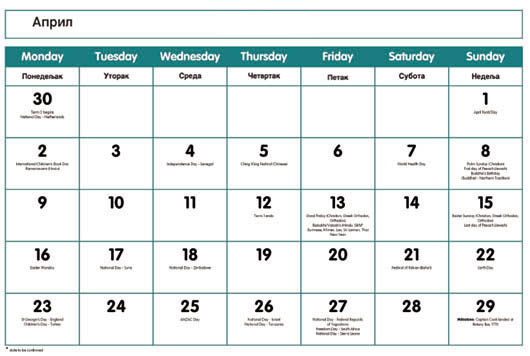Lesson overview
Outcomes
Students examine the influence of interaction with other cultures and the environment in relation to calendars.
Introduction
This activity looks at the origins of the calendar we use every day. For updated dates refer to the department’s Calendar for Cultural Diversity.
Worksheets to download
Resources needed
- e.g. overhead transparencies
- e.g. pens
Activities
Use the internet or library to research
- What is a calendar?
- When did the western or Gregorian calendar come into common use?
- What are the origins of the names of the days and months?
- Why are September, October, November, and December (derived from the Latin for seven, eight, nine and ten) the ninth, tenth, eleventh and twelfth months?
- Why did March change from the first to the third month?
- Why do we have leap years?
- What is a lunar month? What are the phases of the moon?
- Dates of some religious festivals change each year. Why?
- eg Jewish New Year- Rosh Hashonah (Sept/Oct)
- Chinese New Year- Lunar New Year (Jan/Feb)
- Muslim New Year- Hijra/Muharram (March/April)
- Easter changes each year – why?
- Why are Easter and Christmas celebrated on different dates in the Roman and Orthodox churches?
- Make a class calendar marking dates of significance for each member.
Additional strategies
- Visit relevant websites e.g. Calendar Zone
- List countries, cultures or religions that do not use the western calendar.
- What do they use?
- Research and prepare an oral or written report on other calendars?
- How have Australia’s Indigenous people marked and classified time? Research and report.
- Why do you think the western calendar is in use in most of the world today?
Related resources
- Multicultural Programs Unit
NSW Department of Education and Training,
Learning in Harmony multicultural calendar and handbook for teachers - Aboriginal Programs Unit NSW DET, Calendar 2000
- Neville Barnard 1993, It’s about Time Ashton Scholastic
Relevant websites
Copyright
April, 2001
Learning in Harmony Multicultural Calendar – NSW Department of Education and Training
Date:12 October 2000

